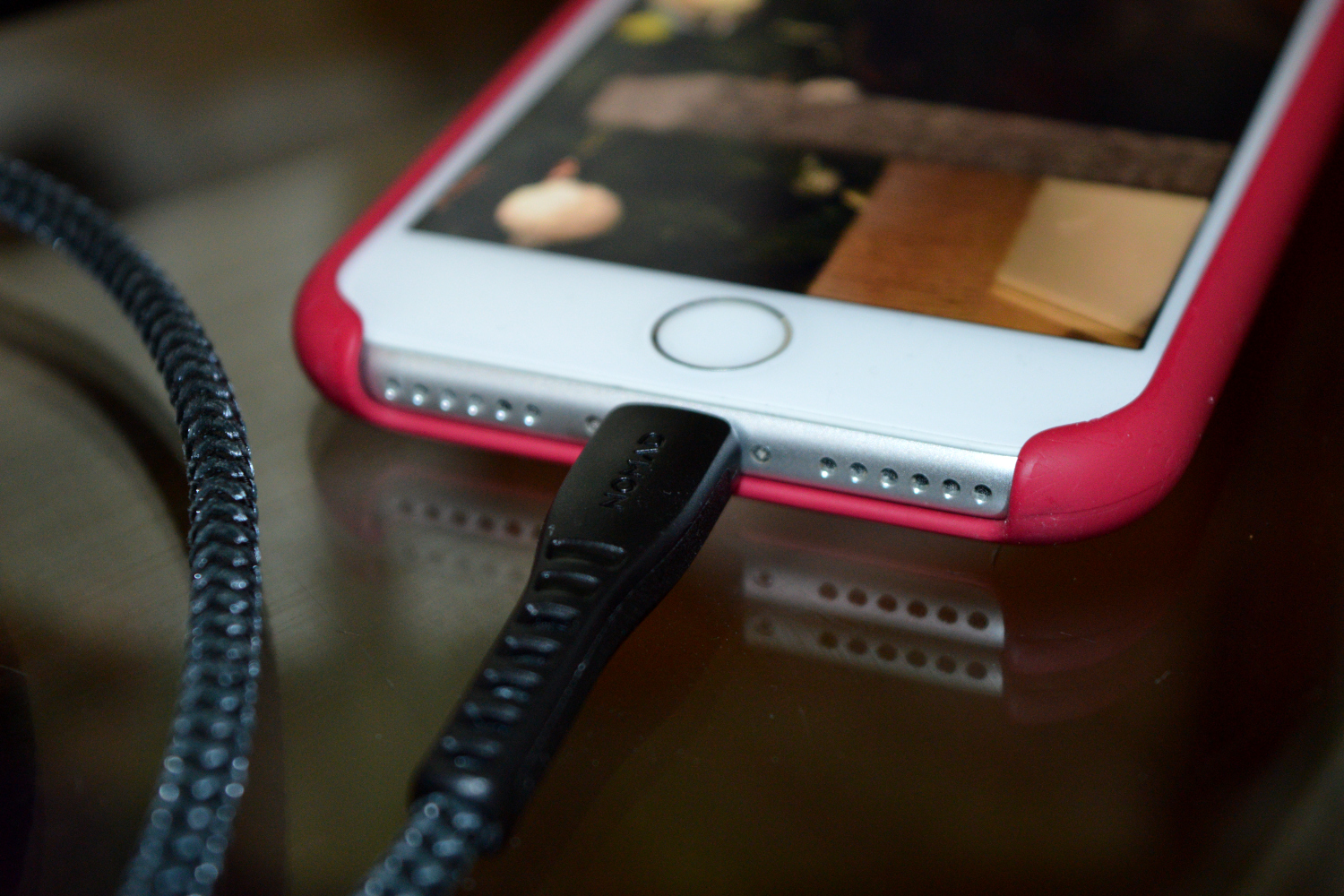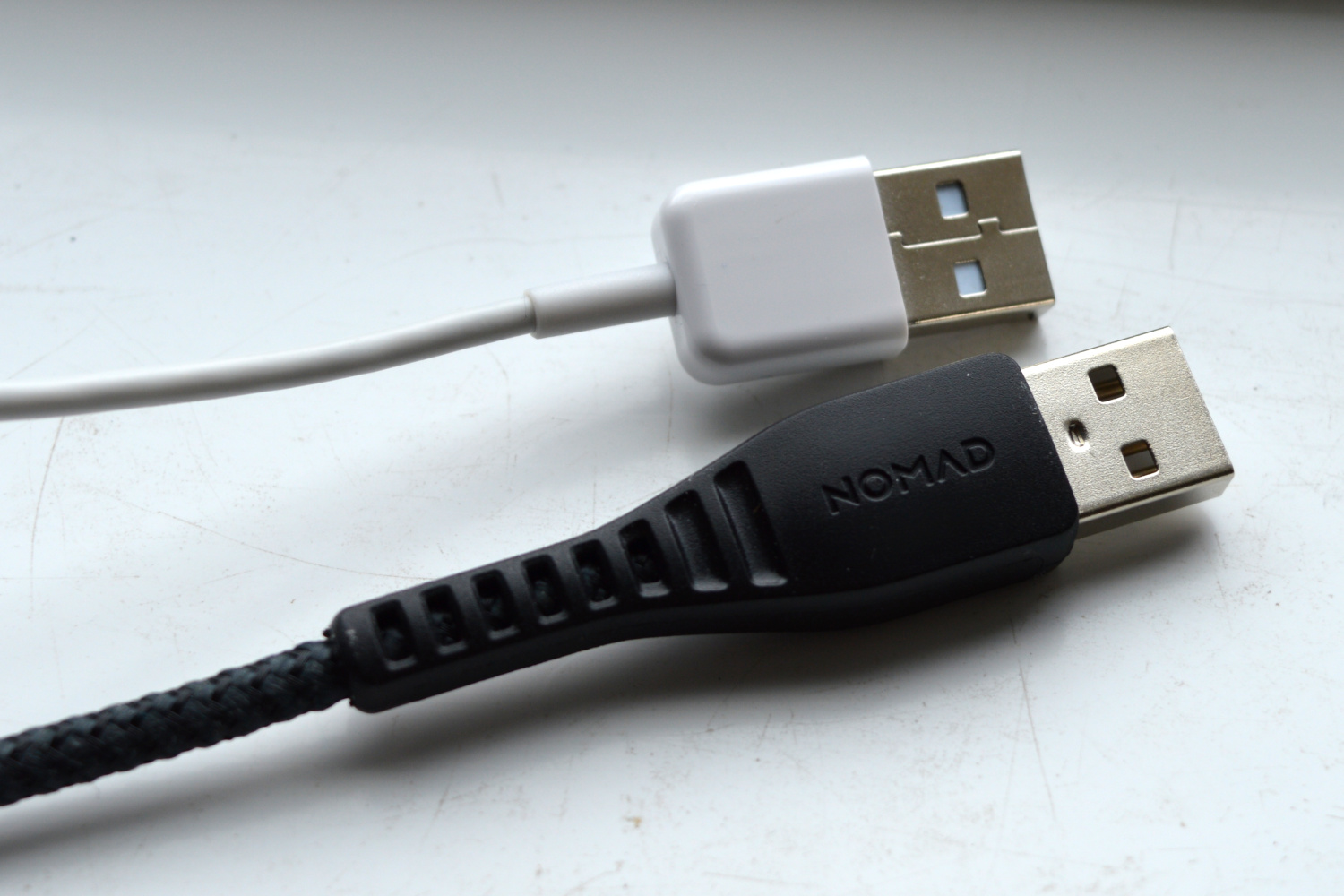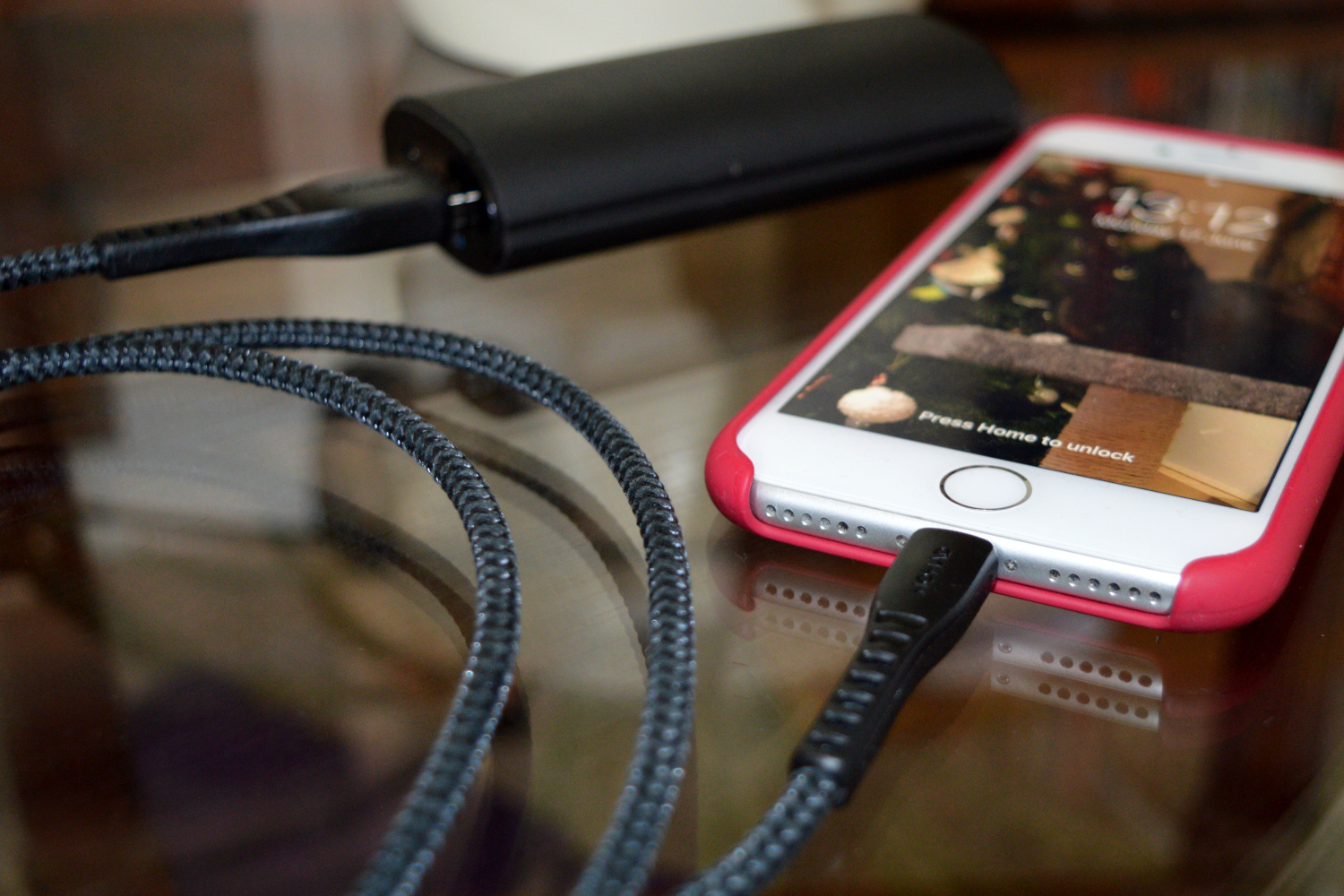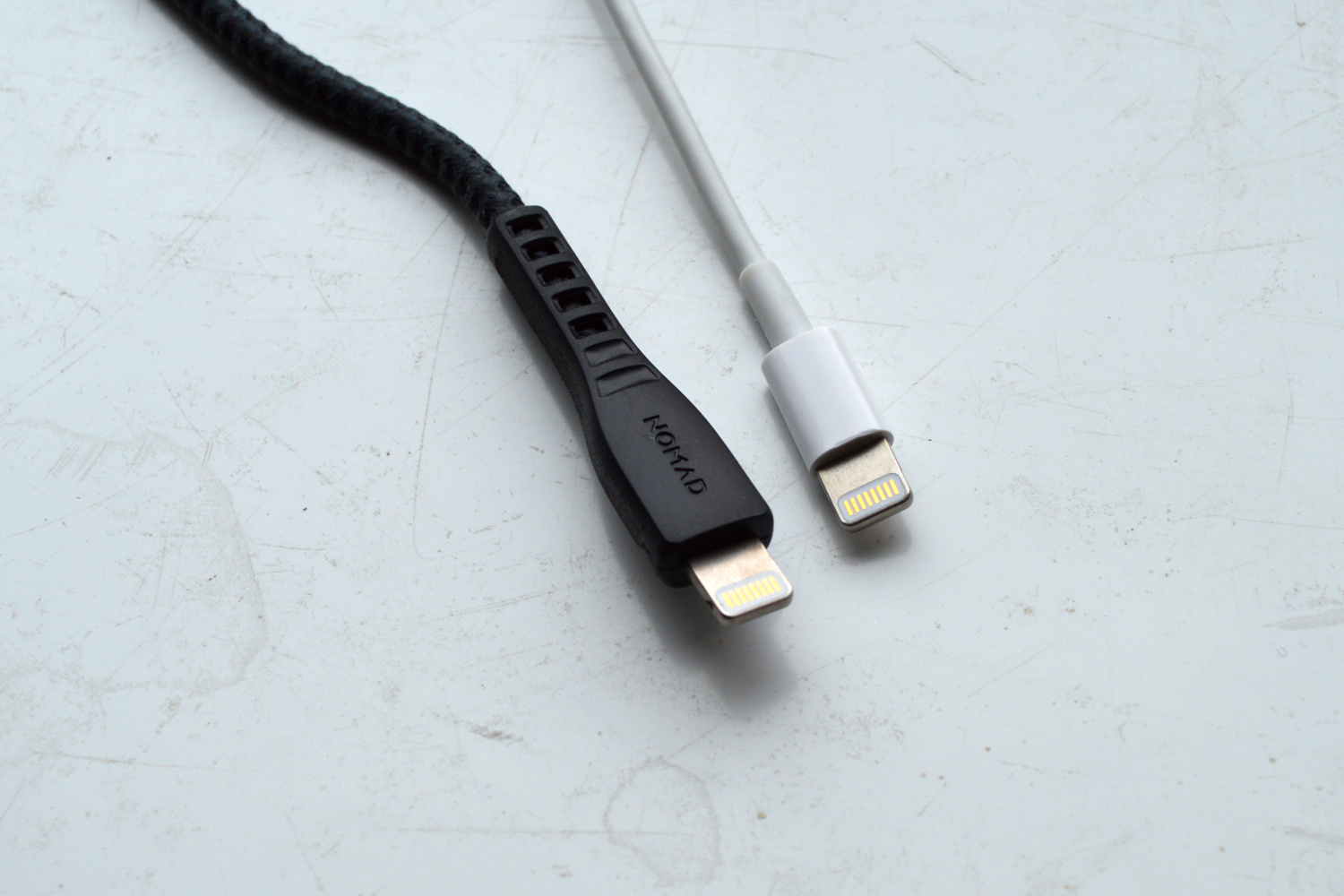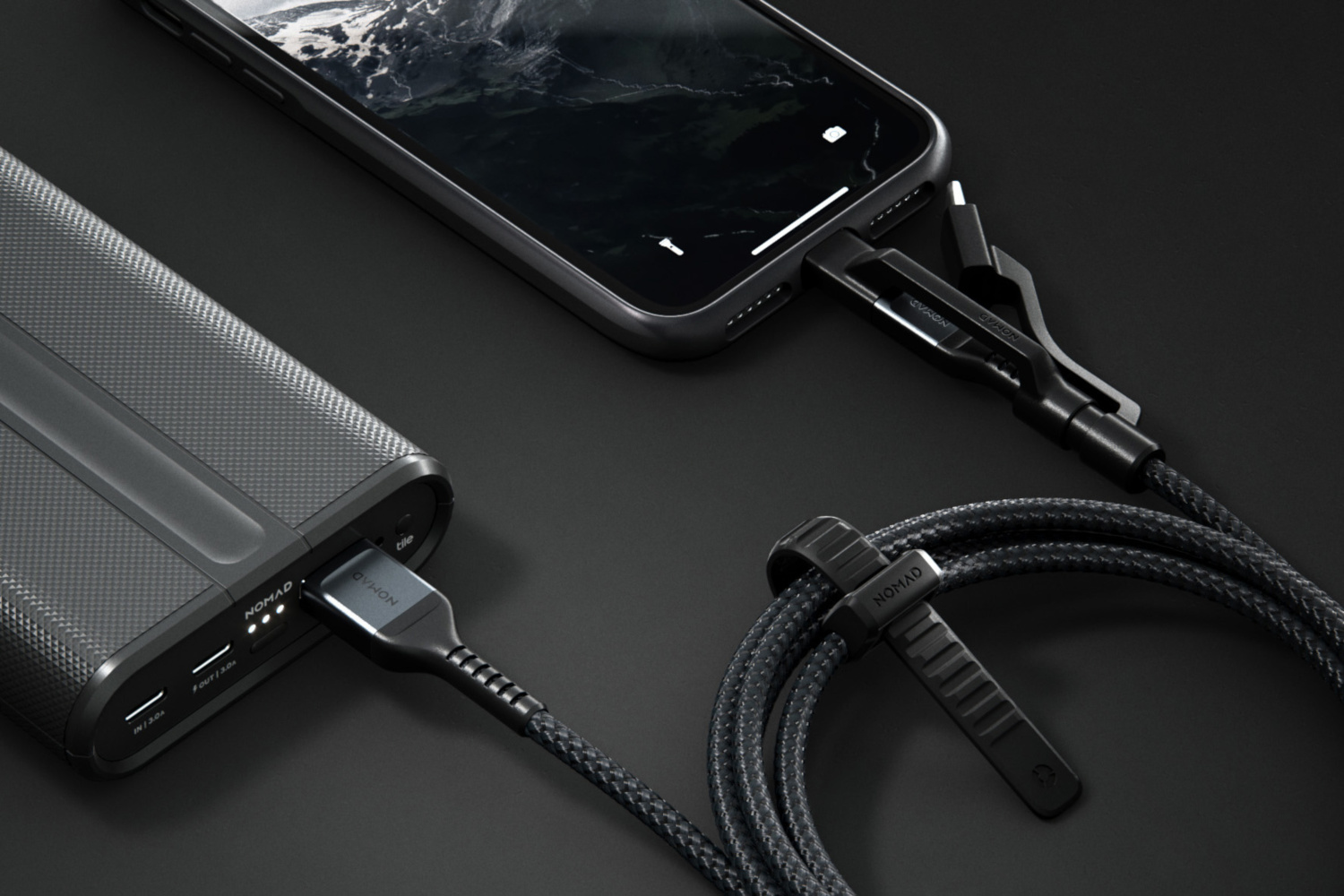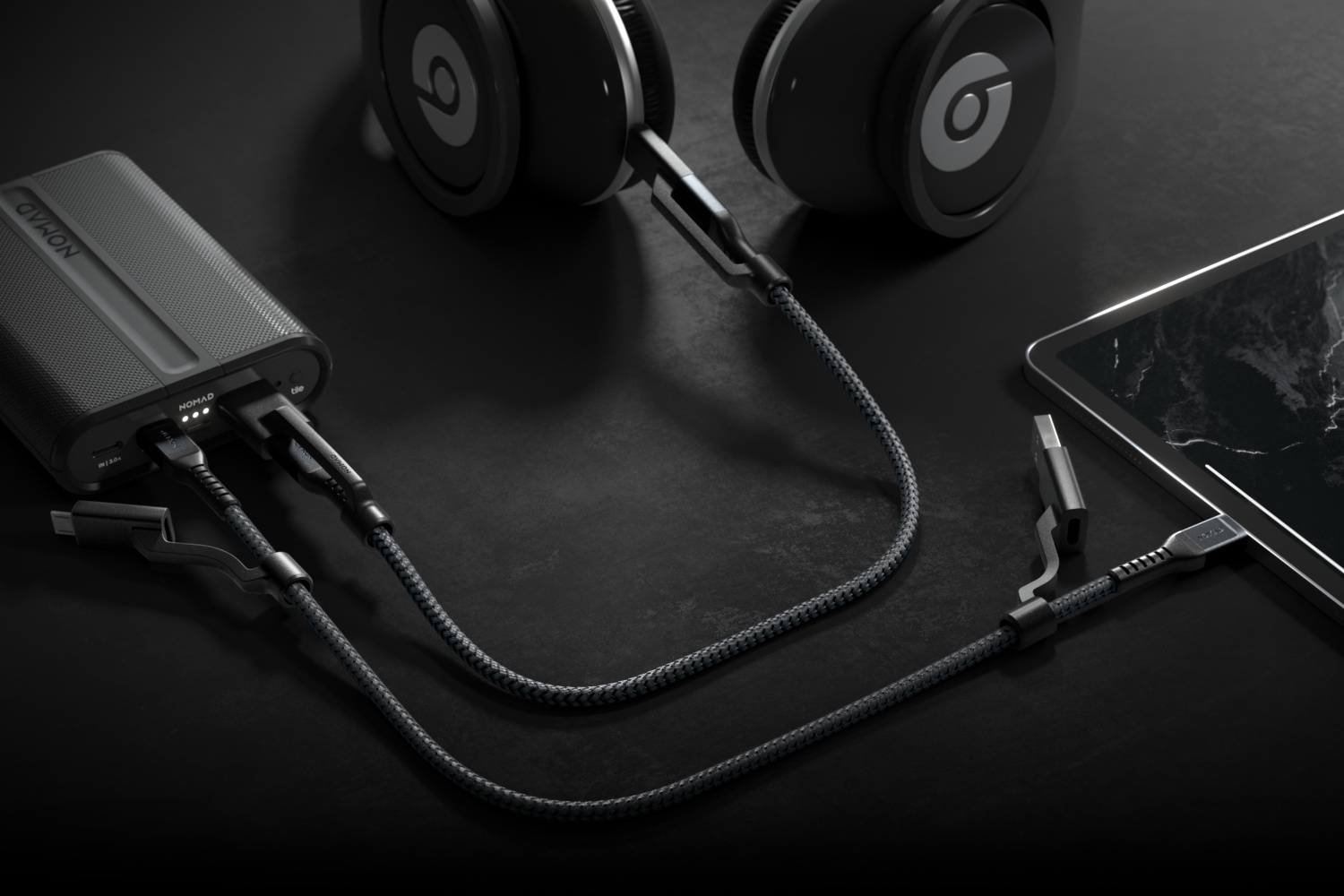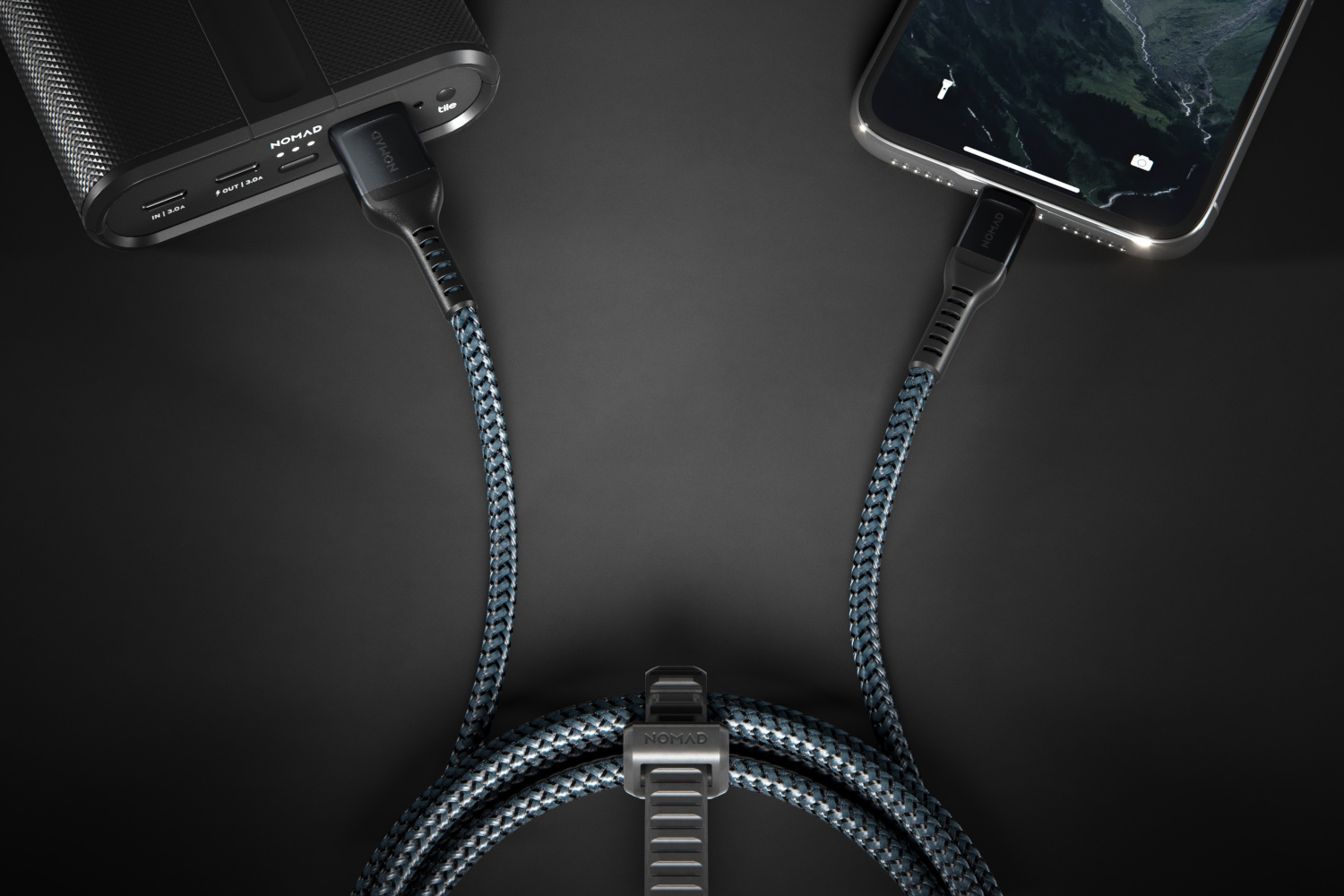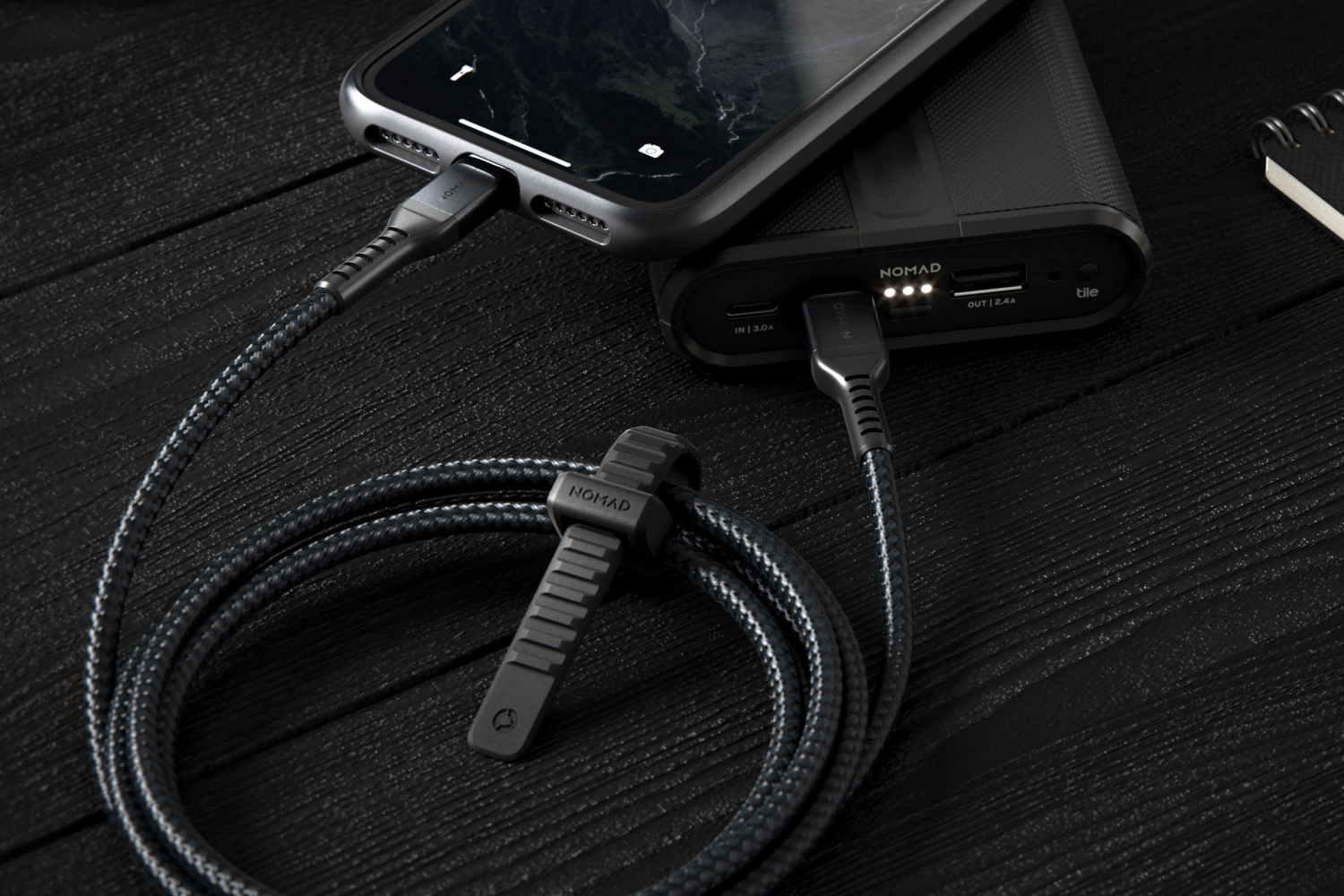While they may not brave the elements like our faithful smartphone companions, charging cables tend can go through some serious punishment. Whether they’re being trodden underfoot, tossed into bags, or bent into uncomfortable positions, the humble charging cable puts up with a lot. So it’s not at all surprising when your cable finally gives up the ghost. While cables rarely stop working, frayed ends and exposed wiring are dangerous, and by continuing to use such a cable you risk fire, electrocution, or worse.
So you need a new cable — but instead of buying another flimsy cable, why not buy a more durable one? Nomad has updated its range of Kevlar charging cables, and the newly refreshed range now finally includes the super-tough USB-C to Lightning cable you need to fast charge your iPhone.
Nomad’s cables are engineered to be durable, with additions that reinforce the most vulnerable and heavily worn sections of regular cables. Both connection points feature over-molded alloy housings to resist wear on the cable ends, while the cable itself is wrapped in a tightly wound Kevlar braid. But Nomad hasn’t stopped there either — each cable also has internal Kevlar reinforcements to further increase the protection offered.
You might assume this protection means Nomad has cut back in other areas — but you’d be wrong. Nomad boasts that each cable comes with industry-leading components, and the USB-C to USB-C cable, in particular, can handle staggeringly fast charging speeds of up to 100W.
The range
The newly updated range includes five cables, available in a variety of lengths — but they’re expensive. The USB-C to Lightning cable will be of particular interest to Apple fans, as it allows for fast charging of recent iPhones, with charging speeds of up to 18W. That cable is available in 1.5- and 3-meter lengths for $40 and $45, respectively. If you’re not too worried about fast charging then there’s also the more standard USB-A to Lightning cable. That cable comes with the same length options, but is slightly cheaper at $35 and $40 each.
For the Android, laptop, or even MacBook users, there’s Nomad’s USB-C to USB-C cable. With the ability to charge at up to 100W, this cable is the perfect hard-wearing cable for anyone who wants a single cable to recharge a phone, USB-C laptop, or MacBook. There’s a 1.5-meter cable for $30, or a 3-meter cable for $35.
But if you want a truly universal experience, then look no further than Nomad’s universal range. Clad in the same Kevlar protection as the other cables, the universal USB-A cable comes with a standard USB-A adapter on one end, and Micro USB, USB-C, and Lightning adapters on the other. There’s a standard 1.5-meter cable for $40, but there’s also a portable 0.3-meter variant available for $30.
A universal USB-C cable is also available, but without the Lightning adapter. Instead, you’ll find an interchangeable USB-C and USB-A on one end and a USB-C and Micro USB on the other. This cable is currently available in 1.5 meters for $35.
Updated on July 16, 2019: Nomad’s new Kevlar cables are now available to purchase.
